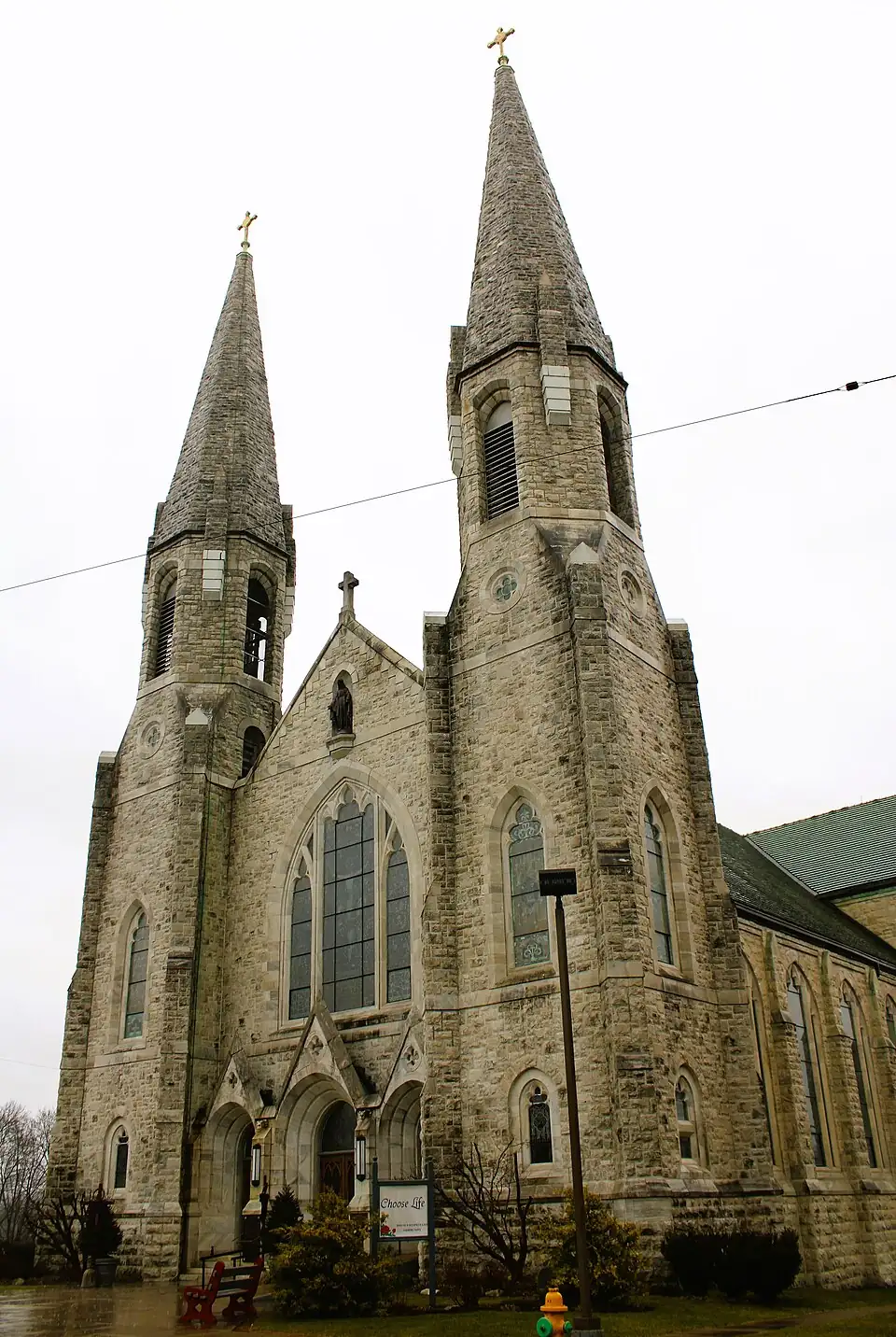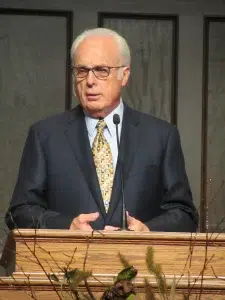Photo: St. Mary of the Angels Church in Olean, part of the Diocese of Buffalo in Western New York; via Wikipedia.
The Diocese of Buffalo has filed a $274 million reorganization plan to end nearly five years in bankruptcy court, marking one of the largest clergy sexual abuse settlements in U.S. history. The plan, submitted to a federal judge, outlines how the diocese will compensate more than 900 survivors of sexual abuse through a court-approved trust that will evaluate each claim individually, The Catholic Herald reported via the website Bishop Accountability.
The proposed agreement is the second largest clergy abuse settlement in New York State, following the more than $300 million plan from the Diocese of Rockville Centre on Long Island.
Buffalo’s plan comes after years of negotiations among the diocese, insurance carriers, and survivor representatives. The diocese agreed to contribute $150 million—funds largely sourced from parishes, many of which are facing closures or mergers as part of restructuring efforts. Two insurers have pledged an additional $122.5 million, with more contributions expected.
The Diocese of Buffalo filed for Chapter 11 bankruptcy in February 2020 after hundreds of lawsuits were filed under New York’s Child Victims Act. Bishop Michael Fisher, who assumed leadership in 2021, has stated that justice for survivors remains the diocese’s “highest priority.” The diocese currently serves about half a million Catholics across eight western New York counties. In recent years, it has launched a “rightsizing” initiative affecting nearly one-third of its parishes, citing both declining attendance and mounting financial pressures from abuse litigation.
According to diocesan records, more than 80 priests and church employees have been credibly accused of sexual abuse.
Push for Transparency and Non-Financial Reforms
While the dollar figure is substantial, survivors and advocates emphasize that the settlement must include more than financial compensation. Attorneys for survivors are calling for non-monetary terms similar to those adopted in the Diocese of Rochester’s bankruptcy case, namely, public disclosure of clergy personnel files and new child protection measures.
Survivor Kevin Koscielniak stressed that transparency is essential. “These are crimes that were committed against children from an institution that was supposed to be so trusting and so worthy and so good,” he said. “The public needs to know what this institution is really like, because this wasn’t just a little window. These were decades of cover up, decades. That story needs to be told.”
Proposals include transferring priest personnel files to the University at Buffalo for public access and establishing stricter conduct rules preventing clergy and staff from being alone with minors. A plaintiff’s attorney said that survivors’ claims will be evaluated using a points-based system that factors in the frequency and severity of the abuse as well as evidence of grooming or coercion. “No amount of money could compensate somebody for what they went through,” the attorney said. “This is the way that the courts and the bankruptcy committees have developed the evaluation process.”
Resistance from Parishes and Ongoing Legal Steps
The settlement has not been without opposition. Several parishes challenged the court-approved plan, objecting to the large financial contributions required of them. However, a judge ruled against their petition, confirming that the bishop retains final authority over diocesan finances.
A spokesperson for the diocese said that final child protection protocols will be incorporated into the Chapter 11 plan and affirmed support for allowing survivor impact statements in court, calling them “essential to [survivors’] desire to achieve some semblance of justice and closure.”
Survivors will vote on the reorganization plan before it can take effect. Attorneys expect the process could conclude by mid-2026, though delays remain possible.
Related News Items:
Buffalo Diocese Abuse Settlement Could Include Safety Reforms and Public Access to Clergy
Judge Rules Against Parishes Challenging Buffalo Diocese Settlement
Survivors Can Still Take Action
If you or someone you love is a survivor of clergy sexual abuse, you are not alone. You may have legal rights under recent church bankruptcy proceedings or other legal channels. Understanding your options can be the first step toward healing and justice. Fill out the form below to have your case reviewed at no cost to you. You can also learn more about your legal rights through our Catholic Church Sexual Abuse Lawsuits Guide.




